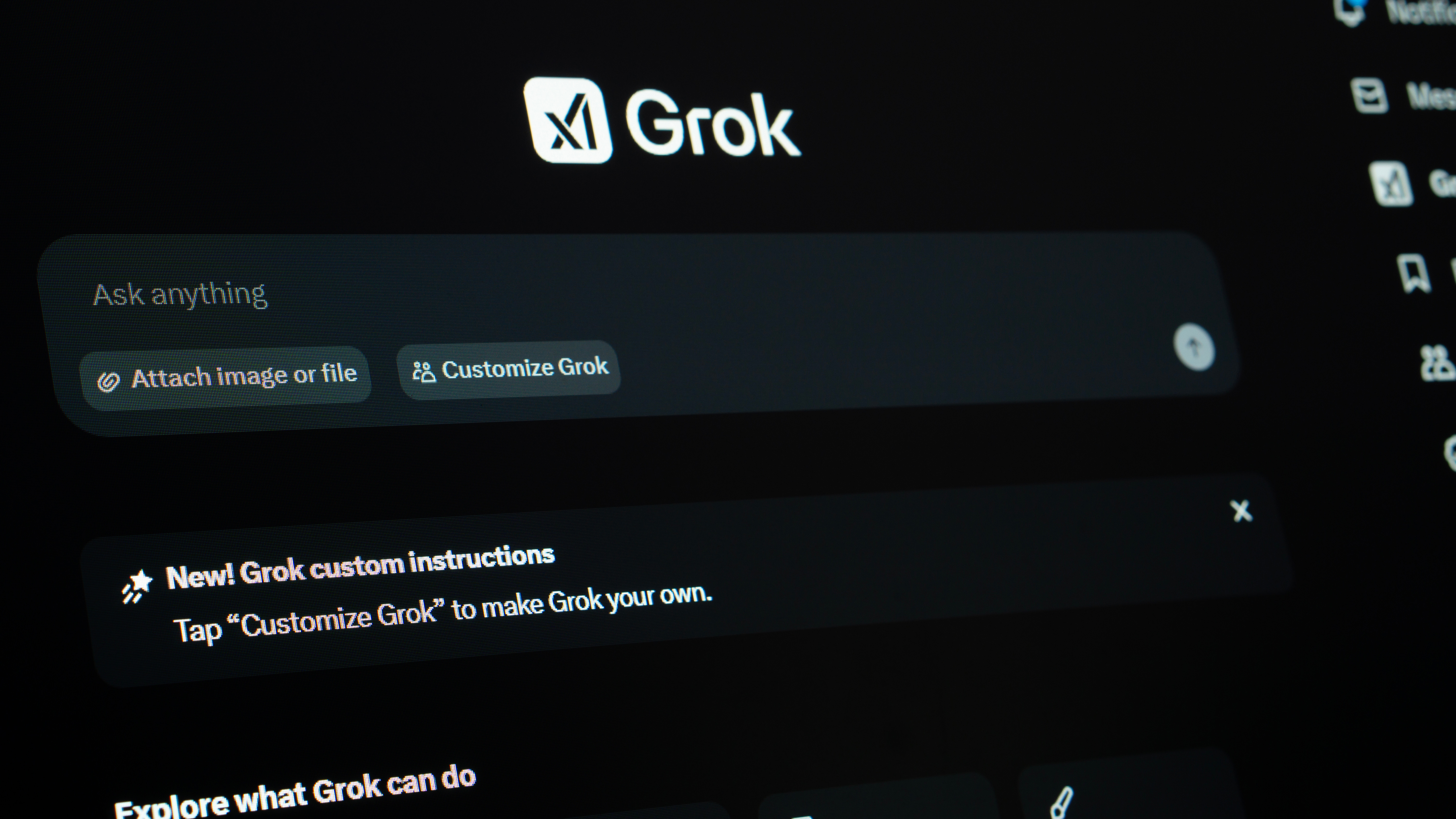“Remove her clothes” – Grok’s latest AI fiasco illustrates one of the key dangers of an autonomous AI
X's AI bot didn't just respond to a request it shouldn't have – it shared the resulting image

Earlier this month, X users pointed out that Grok would respond to tagged requests like “remove her clothes,” posting AI-altered images of the same person wearing undergarments or a bikini right in the comment threads.
After an investigative report by 404 Media, however, Grok has now started responding to such requests with “I can’t help with that.”
Screenshots show users asking the built-in AI to edit a photo shared on X with instructions like “Remove her clothes. I want to see her boobs.” The AI chatbot then appeared to respond to the request, generating an edit depicting the woman in a bra, and shared the edited image within the same thread.
By sharing the edited image within the thread, the Grok ethics loophole didn’t just allow nefarious users to see the images, but appeared to show them publicly to anyone digging through the responses to a post.
X’s AI tool is known for its more lax restrictions, initially designed to give the bot a sense of humor. And the “undress” prompts are not the first time the chatbot has come under fire.
Previously, for example, the AI was criticized for responding to requests to create depictions of politicians wearing bikinis. While many AI platforms refuse to generate images of recognizable people or copyrighted characters, Grok has fewer restrictions in place.
Following the report of the bot responding to requests to undress, however, it appears that Grok has at least one more guardrail in place. On images posted after May 07, the AI now responds to similar requests with “I can’t help with that.”
The best camera deals, reviews, product advice, and unmissable photography news, direct to your inbox!
While X appears to have added “undress” prompts to Grok’s list of restrictions, the loophole highlights one of the dangers with generative AI: users will probably find ways around restrictions to use AI in unethical ways.
Earlier versions of Grok, for example, reportedly generated images of former US Vice President Kamala Harris wearing a bikini, an ethics loophole that Grok had reportedly fixed.
But if the AI already added a loophole not to show presidential candidates and celebrities in bikinis, why didn’t those same restrictions apply to editing an image of any recognizable person?
Outside of the AI responding to inappropriate requests to create nonconsensual sexual imagery, the incidents also highlight a potential pitfall for Grok’s recent ability to respond in threads to questions tagged with @grok.
The social platform started rolling out the ability to ask Grok questions in comments in March. The AI doesn’t always respond (and won’t with certain privacy settings). But, when it does, the AI posts publicly viewable posts in the threads.
Nefarious users will probably always find a way around AI restrictions, but giving an AI autonomy to respond to posts publicly opens up the possibility that those unethical images will reach beyond just the user who typed in the prompt.
The feature is perhaps a funny tool when asking an AI if the moon is really made out of cheese, but in the case of the “undress” fiasco, it also allowed the ethically lax AI to publicly post an edited image it shouldn’t have generated in the first place.
You may also like…
Read up on how to spot an AI-generated image.

With more than a decade of experience writing about cameras and technology, Hillary K. Grigonis leads the US coverage for Digital Camera World. Her work has appeared in Business Insider, Digital Trends, Pocket-lint, Rangefinder, The Phoblographer, and more. Her wedding and portrait photography favors a journalistic style. She’s a former Nikon shooter and a current Fujifilm user, but has tested a wide range of cameras and lenses across multiple brands. Hillary is also a licensed drone pilot.
You must confirm your public display name before commenting
Please logout and then login again, you will then be prompted to enter your display name.
